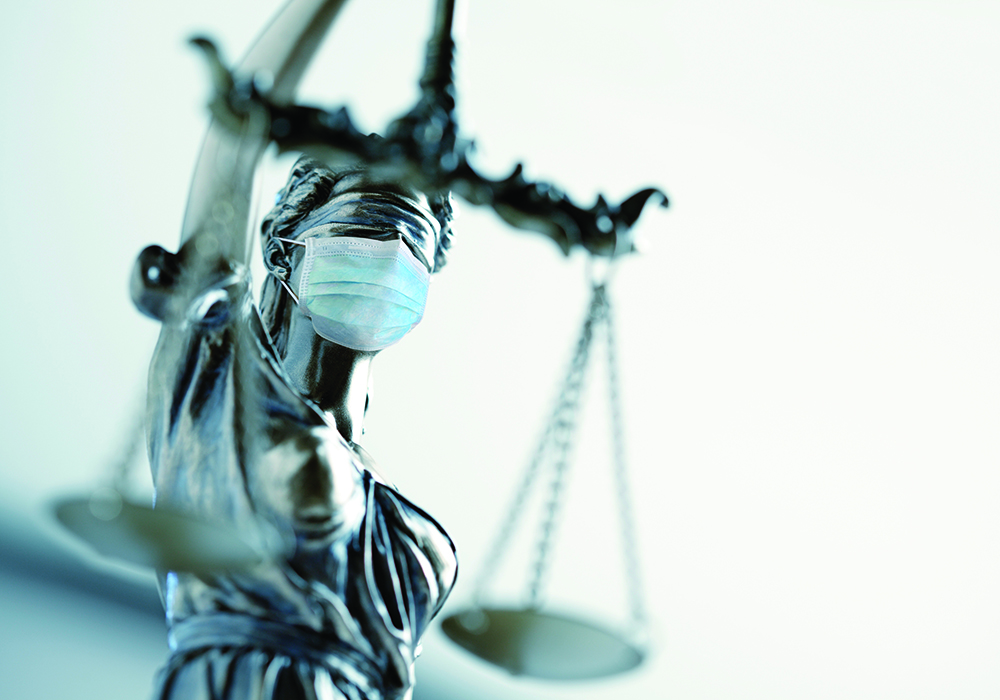The interpretation of the laws is the proper and peculiar province of the courts. A constitution is, in fact, and must be regarded by the judges, as a fundamental law. It therefore belongs to them to ascertain its meaning, as well as the meaning of any particular act proceeding from the legislative body. It can be of no weight to say that the courts, on the pretense of a repugnancy, may substitute their own pleasure to the constitutional intentions of the legislature.
SCOTUS Grants Itself the Authority to Review Law
For the past 244 years, the world has envied the Great American Experience. Civics 101 class equipped us with the U.S. checks and balances system’s elementary pillars:
- Government has three equal branches: executive (the president), legislative (the congress), and judiciary (the courts).
- When legislative laws are disputed, the judicial system interprets a law’s constitutionality.
The latter pillar was solidified with the 1803 Supreme Court of the United States (SCOTUS) case Marbury v. Madison, which established the principle of judicial review, conferring on the court system the judiciary authority to determine whether a law is constitutional. It was a turning point for the legal system and a mechanism to maintain balance among government branches.
Since then, judges have adhered to a motto that the rule of law supersedes all else. During her nomination hearings, U.S. Supreme Court Justice Amy Coney Barrett said, “Justice is blind. We all dress the same. Once we put on the black robe, we are standing united symbolically, speaking in the name of the law, not speaking for ourselves as individuals.”
How Courts Ruled Regarding COVID-19, Societal Demands, and Personal Liberties
The pandemic painted a fine line between America’s public accountability and individual rights. The federal government, through agencies like the Centers for Disease Control and Prevention (CDC), U.S. Food and Drug Administration, and National Institutes of Health issued guidelines and public health protocols to protect the population’s safety. Because we understood little about the virus in those early years, frustration and confusion compounded, causing some groups to use legal means to fight the restrictions and exert their rights. Many of those court cases ended with different verdicts.
In a presidential executive order on September 9, 2021, the White House announced that “the health and safety of the federal workforce, and the health and safety of members of the public with whom they interact, are foundational to the efficiency of the civil service.” That statement was challenged and upheld by the U.S. Circuit Court of Appeals, but in January 2022, those opposed to the mandate asked SCOTUS to reconsider the matter. Sitting judges appointed by Democratic presidents upheld the decision, whereas the ones appointed by Republican presidents sought to relitigate the case.
This is an example of how political statues can be interpreted differently not based solely on the law, and those pandemic-related interpretation disparities exist in courts at all levels. In the states, plaintiffs sued Illinois Governor J.B. Pritzker for exceeding his constitutional authority by mandating several pandemic precautions, including sheltering in place, temporary reductions in business operations, and prohibitions on large gatherings. During the December 2021 arguments, plaintiffs cited the state’s violations of the First Amendment’s free exercise, free speech, and freedom of assembly clauses and the Fourteenth Amendment’s due process and equal protection clauses. However, the district court saw no such violations, especially during a pandemic, and ultimately “denied plaintiffs’ request to amend the complaint a second time on grounds of futility,” ruled in favor of the state, and dismissed the case.
An April 2022 case illustrates different interpretations of the laws. Representatives from the Health Freedom Defense Fund submitted claims that the federal government overreached by requiring masks on airplanes and other public transportation. A Florida U.S. district judge ruled that the government, under CDC auspices, had exceeded its authority regarding administrative law. The judge recognized CDC’s intent for public health but said the agency did not explain the reasoning behind the order. “Our system does not permit agencies to act unlawfully even in pursuit of desirable ends,” the judge said. The court declared the requirement unlawful and vacated the mask mandate, which the Biden-Harris administration promptly did and is reviewing its own process.
ONS’s Perspective on Advocacy Among the Court System
Different judges in different courts from different political appointments interpret and adjudicate similar laws . . . differently. Retired U.S. Supreme Court Justice Stephen Breyer wrote in his treatise on jurisprudence that “it is a judge’s sworn duty to be impartial, and all of us take that oath seriously. That judge, once on the bench, decides according to what he or she believes the law requires.”
Breyer’s idealism is laudable yet regularly disproven. When controversial health issues are brought before the court system, higher courts routinely reverse rulings from their colleagues in lower courts. The Patient Protection and Affordable Care Act, Roe v. Wade, Planned Parenthood of Pennsylvania v. Casey, and the pandemic cases cited here are all examples of conflicting judicial interpretation of the same laws.
Judges—even Supreme Court justices—are human. They have biases, family, friends, and a social network that even in some small ways influence their thinking. They may strive to put the law above all, but they more likely review the facts and interpret decisions based on many different considerations. Certainly, history demonstrates that judges, both liberal and conservative, have moderated their views—and judicial opinions—over their careers.
As weighty decisions percolate through the legal system up to SCOTUS, we must all keep a vigilant eye on the judicial and other branches of government. Advocacy takes many forms, and understanding the process and avenues through which change is affected is one approach that requires persistence, expertise, and a little luck.






